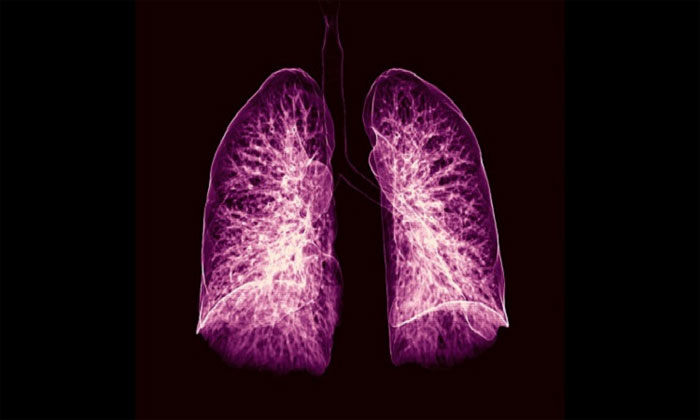Artificial intelligence can diagnose lung cancer up to a year early
The artificial intelligence (AI) program identified key markers of lung cancer through CT scans a year earlier than current methods.
Since cancer is a disease that progresses over time, the later it is diagnosed, the lower the chance of a cure, the new AI program has the potential to save many lives. Lung cancer is one of the most common causes of death with 1.8 million cases globally each year. But lung cancer patients are often found in the late stages, when treatments are least effective. That's why researchers hope AI will help diagnose patients with the disease earlier in the screening process.

Lung CT scan. (Photo: iStock)
A computed tomography (CT) scan can reveal a tumor in the lung and a biopsy or surgery can then confirm it's a malignancy. But each scan requires the radiographer to review about 300 images for the hallmarks of a very small lung tumor. While the trial, which used CT images to find lung cancer patients, is promising, the process is slow because doctors have to sit through each image to determine which patients need a closer examination.
New research using AI-assisted diagnostics by Benoît Audelan of the Epione project team at the French National Institute of Digital Science and Technology (Inrea) at the Université Côte d'Azur, was presented at the International Conference. of the European Respiratory Society. Audelan collaborated on research with colleagues at the university and Therpixel, an AI software company, and Nice University Hospital.
Researchers developed an AI program based on CT images of 888 patients with suspicious growths screened by radiologists. They then tested the AI program on 1,179 patients participating in a lung cancer screening trial with a follow-up period of 3 years. 177 patients in this group were diagnosed with lung cancer through biopsy testing after the last CT scan.
As a result, the AI program detected melanoma in 172 out of 177 patients. The effective diagnosis rate of cancer cases is up to 97%. The five missed cases included a tumor located near the center of the chest, the most difficult location to distinguish between a tumor and other healthy organs in the body.
- Artificial intelligence will contribute to defeating cancer
- IBM's artificial intelligence invented new perfumes
- Electronic nose helps to diagnose cancer early
- The United States allows the use of artificial intelligence to diagnose diseases
- Canada applies 3D technology to treat lung cancer
- Create artificial lungs to test the treatment of lung cancer
- Early signs of lung cancer identification
- Use artificial intelligence to detect cancer for only $ 1
- Artificial intelligence diagnoses breast cancer 30 times faster than a doctor
- People with these habits often have a high risk of developing lung cancer
- Lung cancer and stages
- Blood tests can help detect lung cancer early
 Why is Australia the country with the highest cancer rate in the world while Vietnam ranks 100th?
Why is Australia the country with the highest cancer rate in the world while Vietnam ranks 100th? New drug causes cancer to 'starve'
New drug causes cancer to 'starve' Common cancers in men
Common cancers in men America's incredible discovery: The most feared cancer cell is love
America's incredible discovery: The most feared cancer cell is love